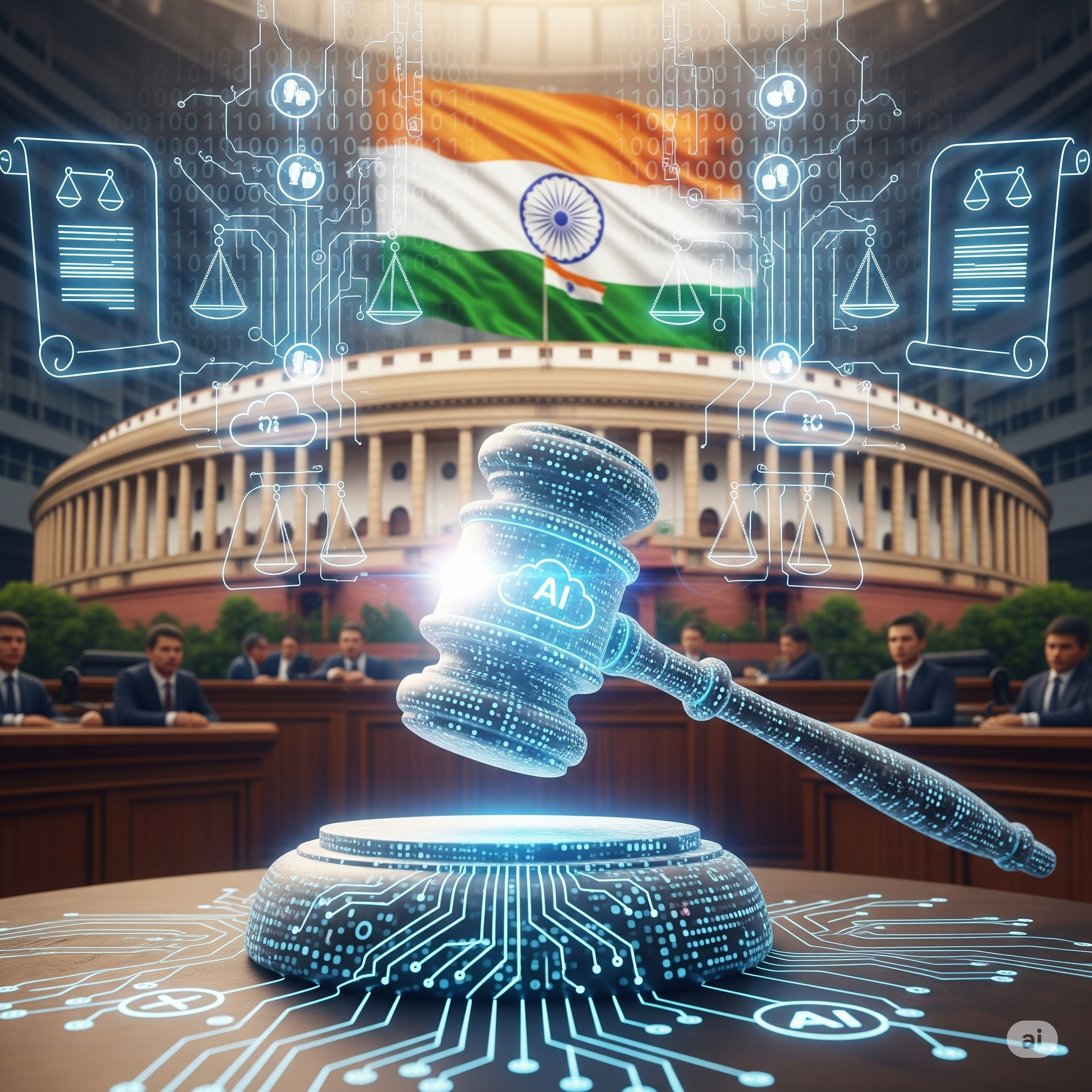Why We Need a New Digital Law in the AI Age
India is on the brink of a regulatory revolution. As AI, deepfakes, data monopolies, and algorithmic decision-making systems rapidly expand, the nation’s IT Act of 2000—designed for a dial-up internet world—is simply outdated.
To address this, the Indian government is working on the Digital India Act (DIA), a comprehensive framework expected to replace the IT Act and create a foundational digital law for the next decade.
Crucially, this new law is not just about internet usage—it will have a defining role in shaping how India governs Artificial Intelligence:
- What is ethical AI?
- Who is accountable for AI errors?
- How do we ensure transparency and prevent harm?
Let’s break down how the Digital India Act (DIA) is expected to influence AI policy, digital rights, and tech innovation in the world’s largest democracy.
🧭 Context: What is the Digital India Act?
🔍 Why Replace the IT Act, 2000?
- Created before social media, smartphones, AI, or big data.
- Outdated on cybercrime, data privacy, and algorithmic harm.
- Lacks accountability mechanisms for platforms or automated systems.
🎯 Goals of the Digital India Act (as per MeitY’s Public Consultations)
- Make India’s internet open, safe, trusted, and accountable.
- Provide a modern legal architecture for:
- AI
- Emerging tech
- User safety
- Competition
- Replace the IT Act’s criminal provisions with tech-forward civil liability standards.
📢 “We need a law that protects citizens and encourages innovation at the same time,” — Rajeev Chandrasekhar, MoS for Electronics and IT
🤖 Why AI Needs Regulation in India
AI is no longer experimental. It’s being used in:
- Healthcare diagnostics
- Law enforcement (facial recognition)
- Financial decisions (credit scoring)
- Hiring, education, and public welfare
But with great power comes great risk:
- Bias in AI models can reinforce inequalities.
- Deepfakes and misinformation are exploding.
- Opaque algorithms make life-altering decisions without accountability.
India needs a legal framework that balances innovation with oversight.
🔑 How the Digital India Act Will Shape AI Governance

1. Clear Definition of AI and High-Risk Use Cases
Expect the DIA to include:
- Legal definitions for automated decision systems, AI models, and generative AI.
- Classifications of low-risk vs high-risk AI use cases.
- High-risk: healthcare, policing, credit, governance
- Low-risk: productivity apps, recommendations
🔒 This helps identify where stronger safeguards must apply.
2. Accountability for Algorithmic Harm
Just like product liability exists for a defective vehicle, AI systems may now face civil or criminal accountability if they cause:
- Financial loss
- Discrimination
- Psychological harm
The DIA may enforce:
- Mandatory disclosures: what data is used? How is the model trained?
- Redressal mechanisms: how can a user challenge an AI decision?
3. Transparency & Explainability Requirements
To reduce “black box” AI:
- Developers may need to explain how their AI works in simple language.
- Public-sector AI (used in welfare, hiring, or policing) may require audit trails and explainability reports.
🧠 This empowers citizens to know why a machine made a decision about them.
4. Protection from AI-Driven Online Harms
The Act will likely strengthen safety norms against:
- Deepfake abuse
- Automated surveillance
- AI-generated cyberbullying
- Child safety in algorithmic feeds
It may enforce:
- Age verification tools
- Content watermarking for AI-generated media
- Platform responsibility for moderation
5. Interplay with the Data Protection Act
The Digital Personal Data Protection Act (DPDPA) 2023 is already in place. The DIA will integrate:
- Consent-based data collection rules for AI
- Limits on profiling and surveillance
- User rights on data correction and erasure
Together, the two laws will form a privacy + AI governance stack.
⚖️ How Will India’s Approach Differ Globally?
| Region | Key Law | Approach |
|---|---|---|
| 🇪🇺 EU | AI Act | Precautionary; risk-based bans for high-risk systems |
| 🇺🇸 USA | Algorithmic Accountability Act (pending) | Sectoral, voluntary guidelines |
| 🇨🇳 China | AI Regulations (2023) | Strict, censorship-first |
| 🇮🇳 India | DIA (proposed) + DPDPA | Innovation-friendly, democratic consultation-based |
India is focusing on co-regulation—letting innovators build freely, but under public accountability frameworks.
🌍 India may emerge as the model for “AI regulation in developing democracies.”
📊 Potential Provisions in the Digital India Act (Expected)
| Area | Expected Provision |
|---|---|
| AI Regulation | Definitions, risk categorization, audit mandates |
| User Rights | Redressal for algorithmic harm, transparency reports |
| Platform Responsibility | Disclosure obligations for AI-generated content |
| Innovation | Regulatory sandboxes for AI testing |
| Ethics | Bias evaluation, inclusion of vernacular datasets |
🧩 Challenges Ahead
- How to regulate fast-evolving AI tech without stifling it?
- Who audits the AI models—government, third parties, or both?
- Can smaller startups meet compliance costs?
- How to handle cross-border models like ChatGPT or Gemini?
These questions will need clarity through rules, not just principles.
🧠 What Experts Say
“The DIA must be modular. One-size-fits-all won’t work for AI models in diverse sectors.”
— Prof. Usha Ramanathan, Legal Scholar
“Public consultation is India’s superpower. If done right, we’ll have the world’s most democratic AI law.”
— Raman Jit Singh Chima, AccessNow
“We need digital laws that protect rights and encourage jobs. The DIA must serve both.”
— Kunal Bahl, Entrepreneur & Angel Investor
📌 What Should You Do?
Developers:
- Start documenting your model inputs, training data, and outputs.
- Focus on explainability and bias reduction.
Startups:
- Participate in public consultations.
- Keep watch for regulatory sandbox programs and compliance schemes.
Citizens:
- Understand your digital rights and recourse.
- Watch for AI disclaimers and privacy settings in your apps.
🚀 Final Thoughts: A New Era for Responsible Innovation
The Digital India Act won’t be just a law—it’ll be a foundation for India’s digital civilization. With AI becoming a core part of governance, economy, and daily life, the need for an ethical, enforceable, and innovation-forward law has never been more urgent.
India has a unique chance to lead—not by copying the West, but by building a law suited to its scale, diversity, and democratic ethos.
The future of AI governance in India starts with how the Digital India Act gets shaped in 2025.









+ There are no comments
Add yours